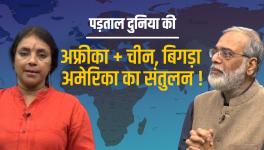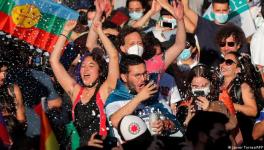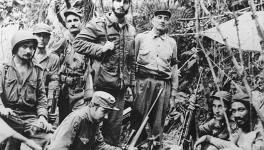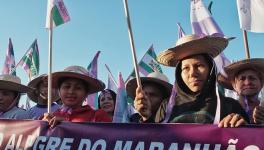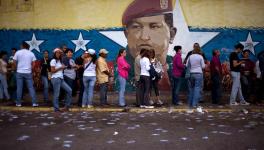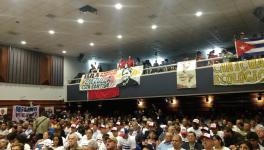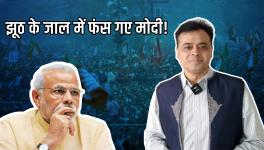Peru joins “The Axis of Hope”: Humala defeats Fujimori
The result of June 5 elections in Peru placed the first-ever leftist in the House of Pizarro in Lima. In a severely polarised election – with leftist Ollanta Humala garnering support from the poorer sections of society and right-wing Kieko Fujimori representing the elite and supported, advised by her father and former president Alberto Fujimori’s minions – Humala registered a hands down victory with 51.3 per cent of the vote against Fujimori's 48.6 per cent. Humala promised what he termed “major transformation” in his very first victory speech. He has plans to redistribute wealth by increasing taxes on the lucrative mining industry – Peru has abundant mineral and natural resources – and direct government funds to provide basic necessities to Peruvians.
Fujimori’s father ruled Peru between 1990 and 2000, and is in prison for 25 years on charges of corruption and human rights violations. Evidence presented in the Court established beyond doubt that senor Fujimori was involved in gross human rights violations carried out to eliminate any worthy opposition. His release would have completely washed the gains that Peru had made in the last decade in strengthening democracy after bringing to book people who perpetrated crimes against humanity including forced disappearances and torture. Kieko had initially stated that she will grant presidential pardon to her father if she won the elections. But seeing the people’s mood against such a move, she changed her position recently, however, continued to look for other routes to help Alberto.
In the first round in early April, Humala led by receiving 31.2 per cent votes, while Fujimori was second with 23.3 per cent. In the two intervening months between the first and the second round, the situation became more and more polarised, finally tilting decisively in favour of Humala.
Key issues during the election were poverty reduction – Peru’s poverty rate being 31 per cent – and social inclusion. However, both the candidates offered diametrically opposite approach to address them. Fujimori proposed a continuation of market-driven economic policies which would create jobs and hence, alleviate poverty. Humala, on the other hand, advocated for a stronger redistributive role of the State.
Voting against the representatives of the rich and the elite, who would have caressed US sentiments more than people’s needs, is, however, not out of context. Two-thirds of the Peruvians live below the poverty line. Income disparities are of such great order that poverty rate in rural areas is 60 per cent as against only 21 per cent in urban areas. All this despite an impressive average annual GDP growth rate of 5.7 per cent since 2000! On the contrary, the left-wing governments of the rest of the region, Venezuela, Bolivia, Brazil to name a few, have provided remarkable relief to their citizens. This definitely has been a major factor for the turn-around in Peru.
Internationally, Humala’s victory is seen as a step forward in further isolating the United States and US-dominated Organisation of American States in the Latin American region. Over the past decade, Latin American countries have tried to form alternate groupings and regional blocs where the preponderant role of the US is not present. That has culminated in the formation of blocs such as the ALBA (featuring Venezuela, Cuba, Bolivia, Ecuador, Nicaragua), Union of South American Nations (UNASUR), and the newly formed Community of Latin American and Caribbean States (CELAC) which is seen as an alternative to the US dominated OAS.
As reported in various media outlets, the United States had been worried about Humala’s possible victory, as that would be tantamount to the hegemon left with possibly one ally – the recently formed right wing government in Chile. Even the Manuel Santos ruled Colombian government has shown an inclination to align with the alternate Latin American regional bloc. The US sponsored steps for reconciliation in coup ravaged Honduras without a true return to power of ousted president Manuel Zelaya also received a setback recently with the return of Zelaya to Tegucigalpa – a step that is seen to be significant. Eventually efforts by Latin American countries to put pressure on the Honduran government to effect the return of Zelaya has paid off. Peru’s left wing turn is expected to accelerate the process of Latin American consolidation on its own constituents’ terms.
The Left turn in Latin America – a project that started as a steady rejection of years of neo-liberalism in the continent has engulfed virtually every country in the continent. Peru is in a sense the last right wing domino to fall. It remains to be seen as to how much maneuverability is retained by Ollanta Humala as he embarks upon course-correction and pro-poor reforms in his country.
Get the latest reports & analysis with people's perspective on Protests, movements & deep analytical videos, discussions of the current affairs in your Telegram app. Subscribe to NewsClick's Telegram channel & get Real-Time updates on stories, as they get published on our website.









